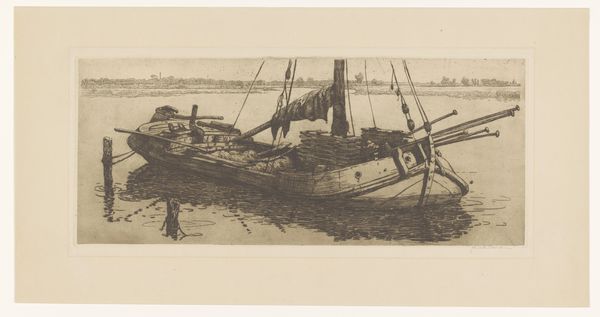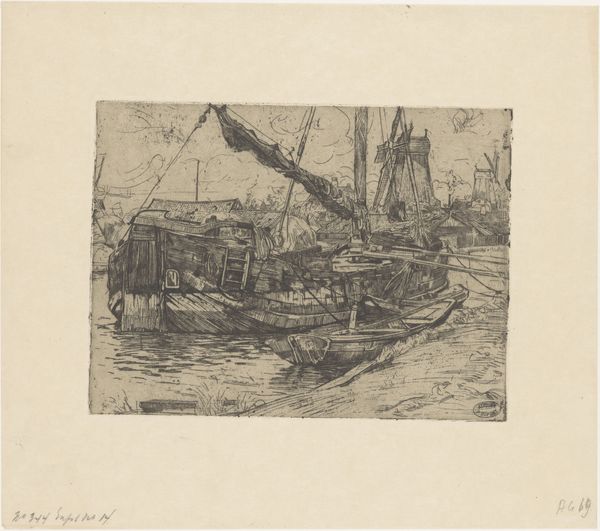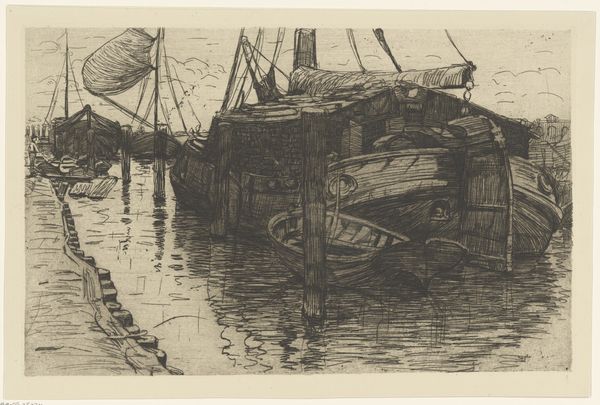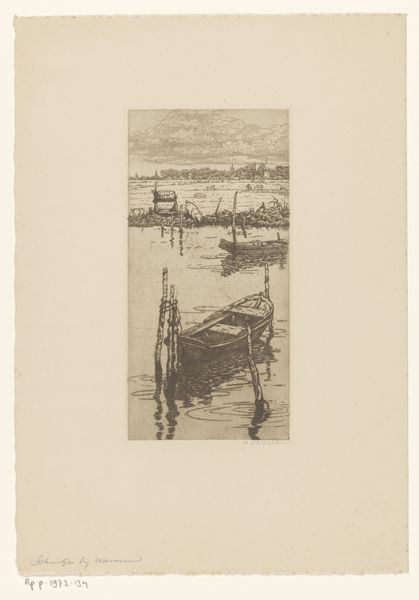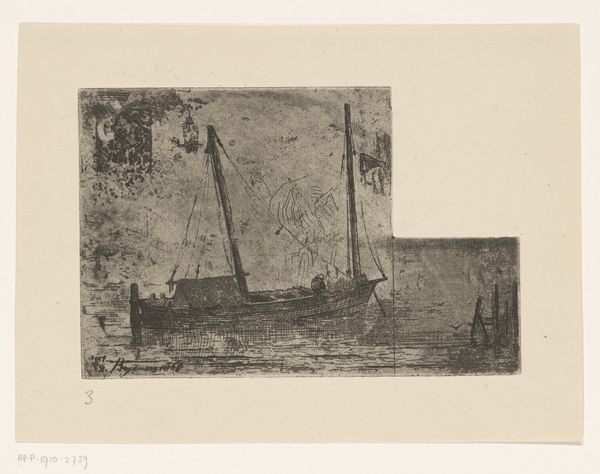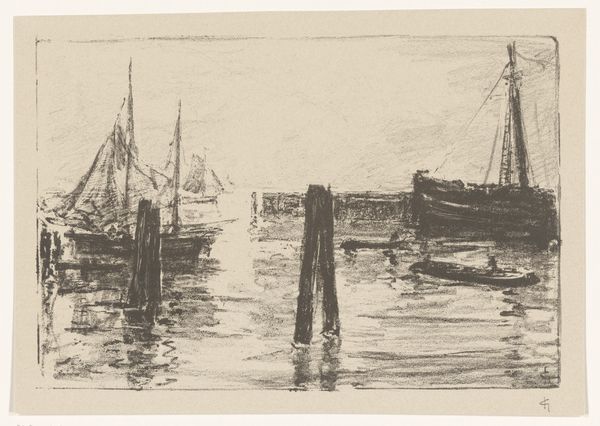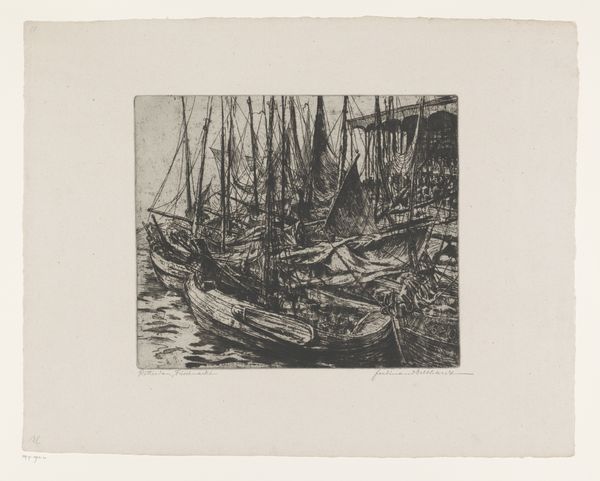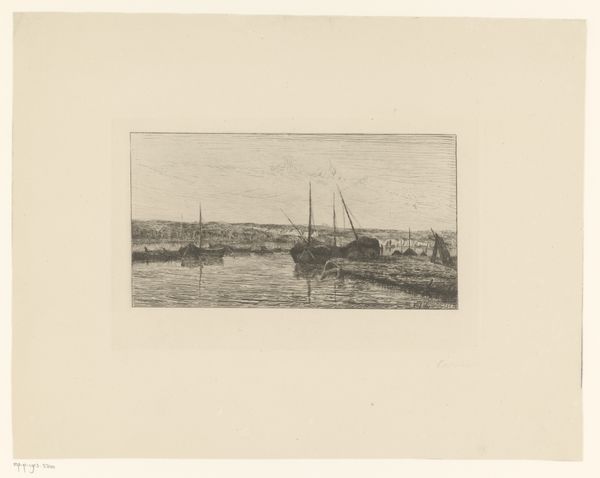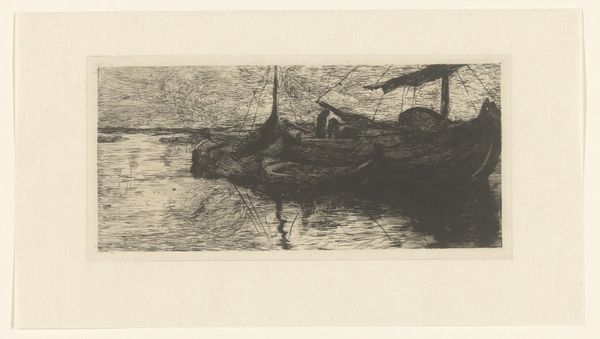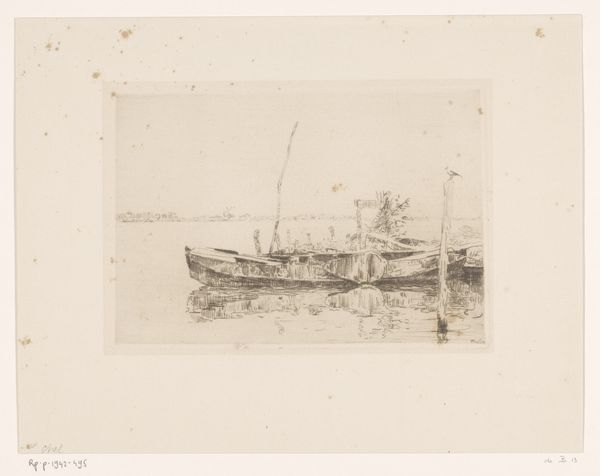
print, etching
#
dutch-golden-age
# print
#
etching
#
landscape
#
realism
Dimensions: height 193 mm, width 313 mm
Copyright: Rijks Museum: Open Domain
Curator: Standing before us, we have "Laakhaven in Den Haag," an etching created sometime between 1888 and 1934 by Willem Adrianus Grondhout. Editor: My first impression is of a quiet stillness, a palpable silence clinging to these worn, aging vessels. The tonality, almost monochromatic, enhances that feeling. Curator: Grondhout masterfully captures the atmosphere, doesn't he? The rough texture of the boats hints at their history, the labor, and the trade they facilitated in Laakhaven, once a bustling harbor. We are presented with not just a view but the product of specific social and economic activity. Editor: Indeed. I’m struck by the almost brutal realism, stripped of romantic idealization. Observe how the formal elements—the strong verticals of the masts contrasting with the horizontal water line—create a stable, almost stoic composition. It’s formally sound. Curator: Exactly. Etching, as a process, allowed for that detail. It allowed for the faithful depiction of the gritty, industrialized area that Laakhaven became. We see the reality of labor, industry, and life intimately tied to this space. What seems visually compelling becomes the output of precise craft work, an iterative biting process upon a copper plate and transfer to paper. Editor: The dark tones serve to amplify that sense of weight, of density. I am thinking how the lines cross and recross, weaving a tapestry of shadows, drawing the viewer’s gaze into the very heart of the print. And that water, look how still it lies beneath the boats. It's captivating. Curator: It’s also telling. Those boats are the raw material to Grondhout, a source he draws upon and adapts. Through art, these common laborers were rendered extraordinary and documented on a scale to engage with many beyond its original physical location. Editor: Well said. It is in this intricate dance of dark and light that the composition breathes, allowing form and mood to converse. Curator: Understanding the artwork as it stands and what it comes from enriches the visual experience. It becomes a dialogue, then. Editor: Indeed. It prompts a reevaluation of how form itself can carry history and emotion. Thank you for the illuminating discussion!
Comments
No comments
Be the first to comment and join the conversation on the ultimate creative platform.
